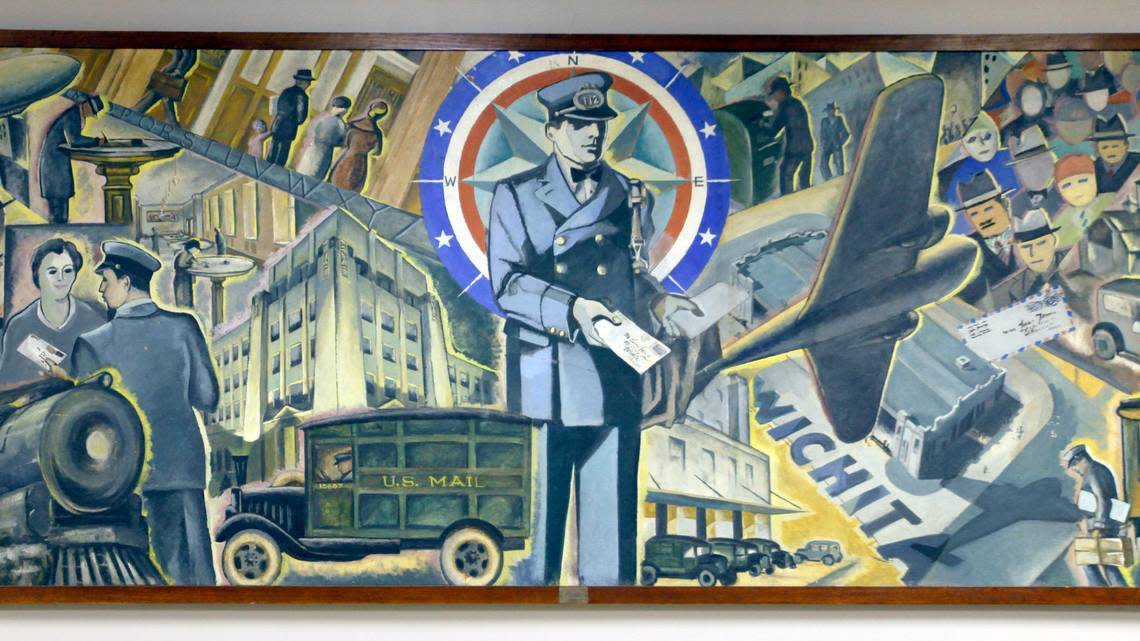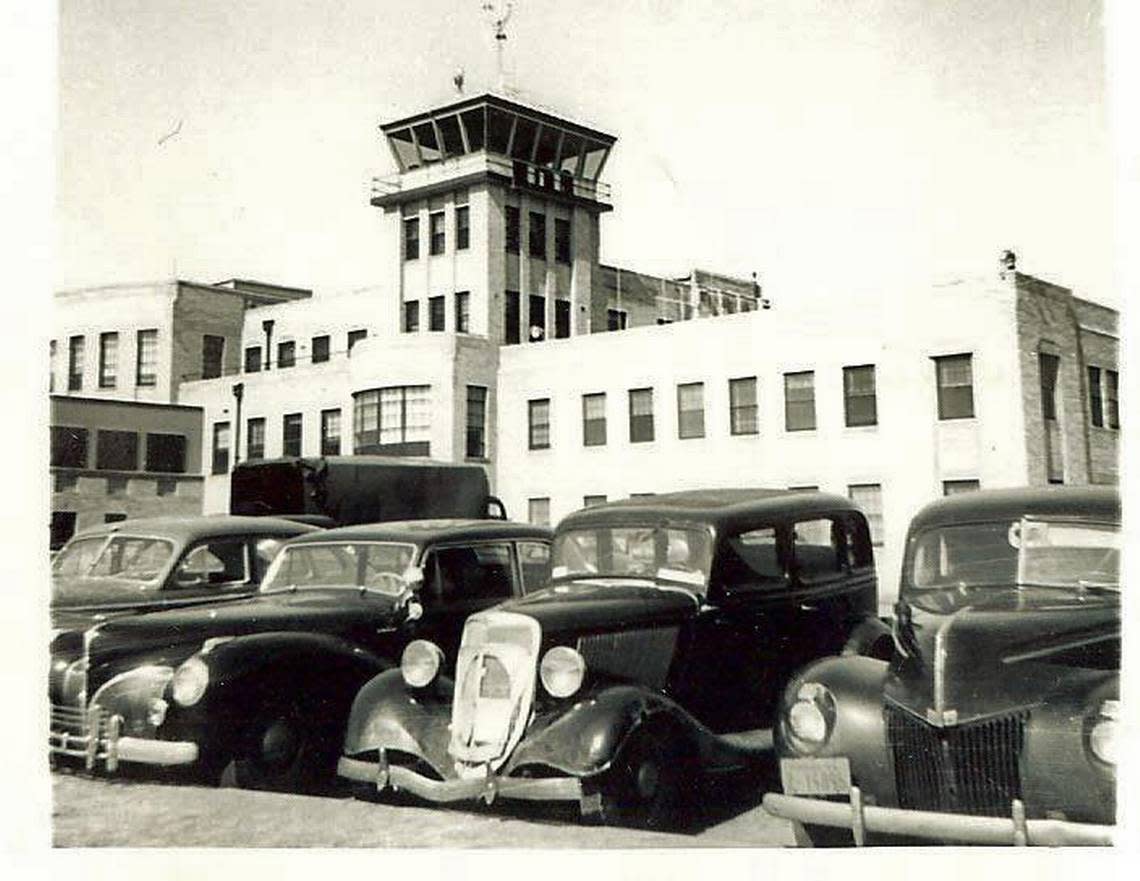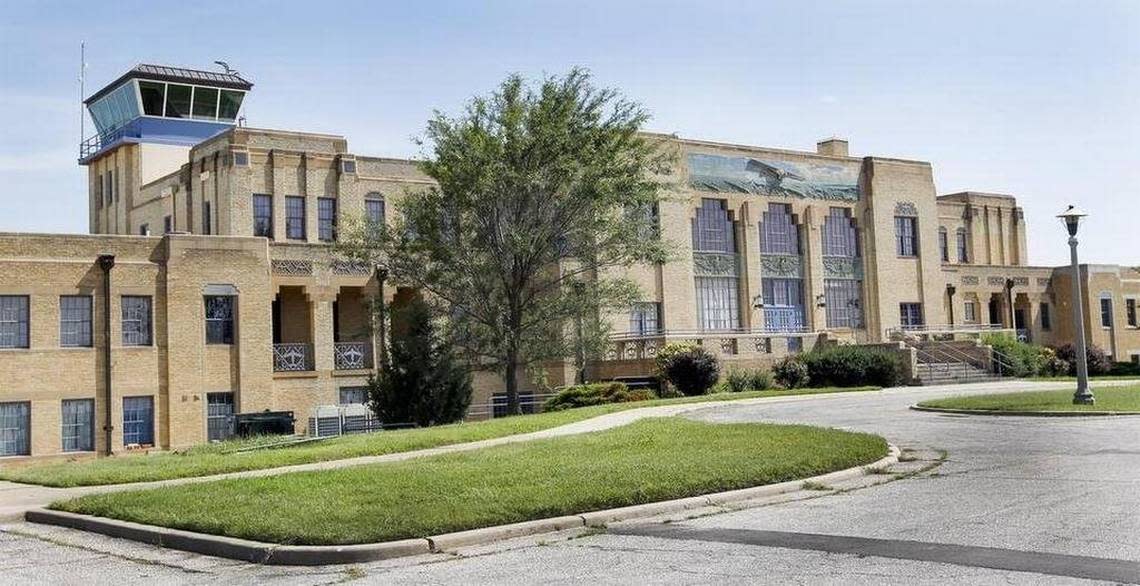Kansas Aviation Museum is adding three new exhibits and a new theater
The Kansas Aviation Museum’s first capital campaign in more than a decade has raised $160,000 for a new theater and three new exhibits, two of which will be in the former airport’s original baggage claim area on the first floor.
“I don’t know if it’s ever been showable space at the museum,” said executive director Ben Sauceda.
The former baggage claim area has never been used for anything other than storage in the museum’s 31-year history.
“It was basically a catch-all area.”
That meant the original entrance where people entered the terminal after getting off planes had not been utilized.
Now, the space will be used for a Welcome to Wichita exhibit and for an expanded Kansas Aviation Hall of Fame.
There will be an expanded theater that will open where the hall of fame currently is, by an admissions area in the front of the museum.
Also, an expanded exhibit on black aviators will move to where the current theater is on the museum’s third floor, and it will be renamed the Rip Gooch Black Aviators Exhibit.
Sauceda, who joined the museum in October 2021, said the expansions and remodeling are all about creating more spaces in which to tell stories.
“With all things aviation, there are so many more stories to tell of individuals.”
Welcome to Wichita
The Welcome to Wichita exhibit will highlight the story of the building, which is at 3350 George Washington Blvd., from 1935 to 1954, when it was used as an airport.
That was back in the days when celebrities such as Gregory Peck, Bob Hope and Howard Hughes deplaned on their way across the country when their planes had to stop in Wichita to refuel. Fred Astaire once tap danced across the terminal floor.
Charles Lindbergh also visited, and Amelia Earhart stopped by, too, before the airport even opened.
These stories and photos along with many more will be featured in the exhibit.
It also will include the period from 1954 to about 1979 when McConnell Air Force Base used the building for wing and base commanders.
There also was a brief period in the early 1980s when the Kansas Air National Guard used the building before it became a museum in 1991.
Though some of that information already is in the museum, Sauceda said, “This will be a new exhibit.”
It will “highlight some of the key architectural pieces and stories that are in there.”
That includes two murals on the evolution of transportation, which artist Charles Felix Jones was inspired to paint in 1933 for some bare walls at the downtown Wichita post office.
“They were deemed too controversial,” Sauceda said. “We can’t figure that part out, but the post office refused them.”
According to a 2012 story in The Eagle, locals rejected the murals over complaints that the WPA and the NRA were socialist organizations and were in conflict with America’s free-market system.

The murals were given to the airport instead, Sauceda said.
“The artist was so mad he ended up moving out of Wichita.”
‘The most unique one’
On the opposite side of the hall from the Wichita exhibit will be the Kansas Aviation Hall of Fame, which currently is in another area on the first floor.
“That will allow us a little bit more of a footprint to expand our hall of fame,” Sauceda said.
The new area will incorporate artifacts that belonged to members of the hall of fame, such as a 1910 violin belonging to Lloyd Stearman, whose Stearman Aircraft Corp. eventually merged with Boeing, and a dress that belonged to Velma Wallace, who was married to Cessna Aircraft Co. president Dwane Wallace and was a pilot in her own right.
The museum owns more than 200,000 artifacts, not all of which will ever be able to be fully displayed at the museum due to lack of space.
“We need about 50 more of our buildings,” Sauceda said.
There is some archival space on the first floor where the artifacts are stored.
There are original blueprints of vintage aircraft and uniforms from flight attendants, pilots and members of the military.
“We have closets full of clothes,” Sauceda said.

The museum also houses more than three million original FAA flight registration cards.
Sauceda called the collection “the most unique one.”
“This is the only place in the world you can get it.”
The museum won a bid for the cards from the FAA. However, the collection is in the archives for now. It can’t go on display until proper safety measures with secured glass are in place.
In the meantime, Sauceda said there will be replicas made of the cards.
Also, visitors can request to see originals of particular planes, which is something he did with his grandparents’ 1953 Piper.
“It brought back a lot of memories of my grandparents, and probably for me it showed there was a big part of their life that I missed out on until now,” Sauceda said. “It’s kind of surreal going back now and in a sense living vicariously through that portion of their life.”
‘The logical place’
The museum’s theater, which currently is on the third floor, will move to where current hall of fame is on the first floor because that’s the entrance to the museum.
“We would love to be able to tell some of those stories as people are entering,” Sauceda said.
His goal is to have regularly rotating movies and videos.
“Having that at the front entrance is the logical place to be able to tell stories.”
The current theater has about a dozen seats.
“This one will double the space.”
That may not sound like a lot, but Sauceda said the museum doesn’t generally deal in large groups, especially at admission times.
There will be a strip with lights along it for people to walk into the theater.
“It’ll look like you’re walking onto an airplane,” Sauceda said.
Chairs will be airplane seats, and the ceiling will be curved to look like a plane.
Sauceda said the sound panels will look like windows and will feature photos from the 1930s.
“It’ll look like you’re looking out a window.”
‘People in aviation’
There’s currently an exhibit on black aviators, but Sauceda said, “We knew we wanted a larger space for it.”
He said there are artifacts not in the exhibit due to a lack of space.
“We do have a number of them.”
The new exhibit will move to the third floor where the current theater is. That’s by the Women of Aviation Exhibit.
“Our third floor is really becoming . . . about the stories of people in aviation,” Sauceda said.
Gooch, for whom the new exhibit will be named, was a longtime board member at the museum.
“It’s an honor to be able to memorialize him through this exhibit,” Sauceda said.
Gooch flew almost until his death at age 98 in 2021. Before he died, he donated his 1950s Rawdon plane to the museum.
Sauceda said his goal is to create a digital and media presence in the exhibit instead of a static board display. He said that will allow the museum to more easily update displays and show different aspects of the stories on exhibit.
A new goal
Sauceda now has a second fundraising goal to get to: $200,000 to help with a rise in construction costs.
Construction began last week and should be complete by February barring delays.

Sauceda is calling the renovation the Matty Project after Matthew Laird, who was known as Matty. He said Laird and his self-named company were the first producers of aircraft in Wichita — starting in 1920 — and employed Walter Beech and Stearman, who went on to start their own aircraft companies.
Sauceda said Laird was the catalyst who spurred ingenuity of aircraft production in Wichita, and he’s using the Matty name “as more of an incentive to me.”
“The goal is that this is our first project of many to come,” Sauceda said.
He said the museum holds such rich aviation history and needs to continue to improve.
“We have to start small, but we have to start.”
